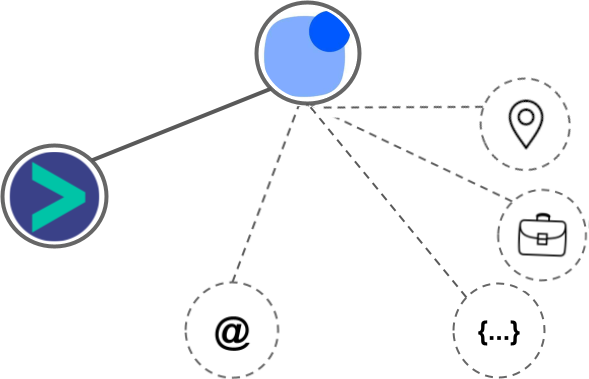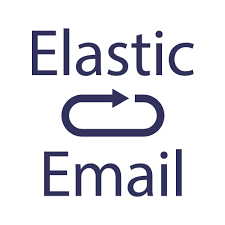Reply.io vs Campaign Monitor
Hyperise integrates with 100's of sales and marketing tools, many of which are in the Marketing Automation category. With so many to choose from it's sometimes hard to know which is best, but don't worry, we've got your covered.
In this comparison guide we're going to look at the Highlights, Pros, Cons and Pricing of Reply.io and Campaign Monitor. We'll also delve into the details of which offers the best personalization options within Marketing Automation, with there respective Hyperise integrations

Reply.io
Pricing: Marketing automation platform pricing can vary depending on the features, functionality, and scale of the platform. Some platforms offer usage-based pricing models, while others charge a flat rate or a percentage of revenue generated through the platform. Some platforms require an upfront investment, while others offer monthly or annual subscriptions. Overall, it is important to carefully evaluate your business's needs and goals when considering marketing automation platform pricing.Vs

Campaign Monitor
Pricing: The pricing for Campaign Monitor's email marketing platform depends on the number of subscribers you have and the features you require. They offer four different pricing plans: Basic, Unlimited, Premier, and Custom. The Basic plan starts at $9 per month for up to 500 subscribers and includes basic email marketing features such as email templates, automation workflows, and A/B testing.
Reply.io vs Campaign Monitor Highlights
The main difference between a Marketing Automation platform like Reply and an Email Marketing platform like Campaign Monitor is that while both can send emails, a Marketing Automation platform offers a broader range of tools to automate and manage multiple aspects of the customer journey.
Reply allows users to create and automate personalized messaging across various channels, including email, social media, and chat, with advanced features like A/B testing, lead scoring, and workflow automation. In contrast, Campaign Monitor is primarily focused on creating and sending email campaigns, offering features like customizable templates, list segmentation, and analytics.
In summary, a Marketing Automation platform like Reply provides a more comprehensive solution for businesses looking to manage their entire customer journey, while an Email Marketing platform like Campaign Monitor is a more streamlined tool focused on sending effective email campaigns.
Reply.io vs Campaign Monitor Pros
Reply.io Pros
- Reply offers more comprehensive, multi-channel automation capabilities compared to Campaign Monitor's email-only focus
- Reply provides a broader range of integrations and API options, allowing for greater customization and flexibility in connecting with other tools and platforms
- Reply's AI-powered features, such as personalization and lead scoring, offer more advanced and data-driven automation options compared to Campaign Monitor's simpler segmentation and targeting options
- Reply's analytics and reporting features provide deeper insights and visualizations, allowing for more informed decision-making and optimization of campaigns
- Reply's pricing model is more flexible with options for both monthly subscriptions and pay-per-use plans, whereas Campaign Monitor's plans are only based on subscriber count.
- Reply allows for multi-channel follow-up and outreach capabilities such as phone, social media, and more. Campaign Monitor limits only to email follow-up.
Campaign Monitor Pros
- Pros for Campaign Monitor:
- Specializes in email marketing, providing top-notch tools for creating and sending newsletters and other email campaigns
- Easy-to-use and intuitive interface, making it ideal for beginners and those with limited technical skills
- Offers a wide range of customizable email templates, as well as advanced segmentation and personalization options to enhance targeting and engagement
- Provides detailed analytics and reporting, enabling users to monitor the performance of their email campaigns and make data-driven decisions
- Integrates with various third-party apps and services, including popular e-commerce and CRM systems
- Cons of Reply:
- While Reply is a powerful marketing automation platform, it is not specialized in email marketing like Campaign Monitor, so its email features may not be as robust
- Reply may be more suitable for larger businesses with more complex marketing needs and higher budgets, as it can be quite expensive for smaller businesses or startups
- Learning curve may be steep for those unfamiliar with marketing automation tools, as the platform offers a wide variety of features and workflows that require some level of expertise to execute properly.
Reply.io vs Campaign Monitor Cons
Reply.io Cons
- Limited features for email marketing compared to Campaign Monitor
- May not be suitable for businesses that focus solely on email marketing
- Pricing can be higher compared to some email marketing platforms, including Campaign Monitor
- Integration options may be limited compared to Campaign Monitor
- Learning curve may be steeper for those new to marketing automation platforms compared to email marketing platforms.
Campaign Monitor Cons
- Campaign Monitor lacks advanced marketing automation features such as lead scoring and nurturing, which Reply provides.
- Unlike Reply, Campaign Monitor's pricing model is based on the number of emails sent, which can result in unpredictability of costs for users with a large email list.
- Campaign Monitor doesn't support split testing for webpages, while Reply enables split testing for both emails and landing pages.
- Reply has built-in CRM capabilities which Campaign Monitor lacks.
- Campaign Monitor doesn't offer lead capturing tools, while Reply provides users with a range of techniques to generate leads, such as forms, pop-ups, and quizzes.
Reply.io & Campaign Monitor Hyperise Integrations
Reply.io uses the Image embed method to integrate with Hyperise, giving a simple way to add personalized images to your messages.
Reply.io makes the following data points available to Hyperise, to enable personalization in images used in outreach and linked out to your personalized website landing pages.

- Using business Email passed from Reply.io, Hyperise is able to enrich business logo and website screenshots. In some cases, with a business Email we're also able to enrich profile images, subject to the business email having a publicly available profile.
- Business name
- Job title
- City
- Country
- State
Reply.io Integration Guide
Campaign Monitor uses the HTML code embed method to integrate with Hyperise, giving a simple way to add personalized images to your messages.
Campaign Monitor makes the following data points available to Hyperise, to enable personalization in images used in outreach and linked out to your personalized website landing pages.

- Using business Email passed from Campaign Monitor, Hyperise is able to enrich business logo and website screenshots. In some cases, with a business Email we're also able to enrich profile images, subject to the business email having a publicly available profile.
Campaign Monitor Integration Guide
 vs
vs 
 vs
vs  vs
vs  vs
vs  vs
vs 
 vs
vs 


 vs
vs  vs
vs  vs
vs 



 vs
vs  vs
vs 
 vs
vs  vs
vs  vs
vs 

 vs
vs 






 vs
vs  vs
vs 


























